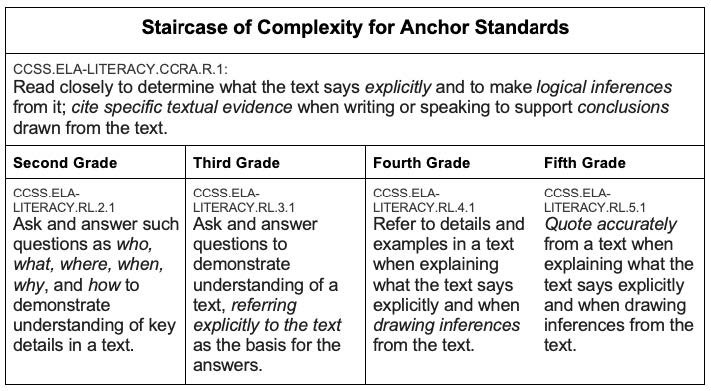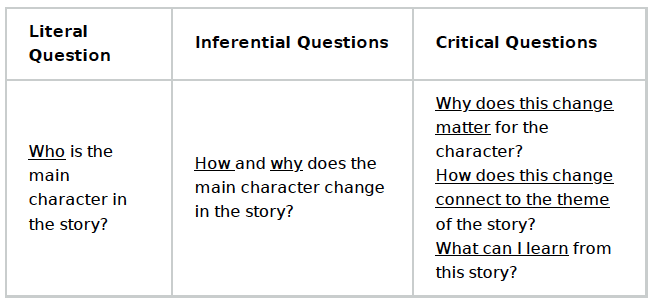What does it mean to make high-school students “college and career ready“? Does it mean that they have memorized a lot of information or have a deep understanding of core concepts? Does it mean that they write essays based on their personal experiences, or evidence-based background knowledge? Does it mean that they accept all information given as fact, or evaluate sources before making an informed opinion?
In 2009, state leaders across the United States launched a nationwide effort to develop consistent, research-based, and developmentally rigorous K-12 math and English language arts standards. This effort was in response to uneven expectations for academic success state by state, which resulted in students from some U.S. states showing higher test scores and more capability to cope with college. The gaps in college readiness also spilled over into the workplace, with employers struggling to find U.S. college graduates with the ability to thrive in entry-level jobs. In short, the U.S. education system was failing to prepare students for their responsibilities as competitive global citizens systematically.
Thus, the Common Core State Standards (CCSS) were born, an initiative developed by teachers, school chiefs, administrators, and subject matter experts. These grade-level standards were created to ensure that all U.S.students graduate from high school with the knowledge and skills required to succeed in college and beyond. The CCSS are:
- Research- and evidence-based
- Consistent and progress cumulatively throughout the grades
- Aligned with college and career expectations
- Based on rigorous content and application of knowledge through higher-order thinking skills
- Built upon the strengths and lessons of current state standards
- Informed by other top-performing countries to prepare all students for success in our global economy and society
With the adoption of these new standards came some changes to how math and English language arts are taught in U.S. public schools. The commonality between the disciplines is a focus on FEWER concepts overall. This way, students can develop a deep and critical understanding of core subjects that build progressively throughout grade levels. Anchor standards were designed to ensure that K-12 students are exposed to increasingly complex material and concepts built upon each other. These standards prepare students to demonstrate not only factual comprehension of reading material but also inferential and critical thinking skills that help solve real-world problems.
Three Different Types of Comprehension

The table above shows an example of the first anchor standard for literacy, which requires students to read a text and comprehend it at a literal level. Students are to make inferences and back up those inferences with evidence. Students build their reading comprehension and academic writing skills over time to prepare them for essay writing in college. As you can see, in early elementary, students focus on factual information directly stated in a text, which prepares them to make inferences and cite evidence in upper elementary and beyond. Students gradually develop critical thinking skills in middle and high school.
Literal Comprehension Skills
The foundation to reading comprehension is literal comprehension, which means that students need to pull key details out of literature and informational texts. This means that when students approach a text, they need to know which questions to ask, such as who, what, when, where, why, and how. An example of literal comprehension is identifying the main character of a story. If students cannot answer questions like this when reading developmentally appropriate reading material, they need to monitor themselves and reread to ensure their OWN factual understanding. Without literal comprehension skills, students cannot grow as readers and develop inferential and critical thinking abilities necessary to thrive in the real world.
Inferential Comprehension Skills
Students use their literal comprehension skills to make inferences, also known as “reading between the lines.” Inferential thinking requires students to connect clues from fiction and nonfiction texts to their background knowledge to make educated guesses about people, events, and main ideas. For example, a student may have to infer HOW and WHY the main character changed throughout a story without directly being told this information by the author. Before the CCSS, teachers focused predominantly on making inferences within literature rather than informational text. This gap presents problems once students go to college and begin their careers, since most adults grapple with nonfiction material daily. The CCSS requires students to be exposed to fiction and nonfiction text equally to build their background knowledge and make inferences about the world around them.
Critical Reading Skills
Finally, the ultimate goal of reading comprehension is for students to develop their abilities to think critically about complex texts. But how is critical reading different from making inferences? Critical reading requires students to not only read between the lines but beyond them, making global connections. Students not only understand the texts they are reading but actively engage with them. They should be asking themselves, “why does this matter in the real world?”. For example, students with strong critical thinking skills will ask themselves how the main character changed in the story AND why that change was IMPORTANT to the character’s development and how it connects to the story’s THEME. Furthermore, the students will ask themselves what they can learn from this story, based on the lesson that the character learned from this significant change. This way, students who graduate high school are prepared to comprehend complex reading material and use their knowledge and skills to become informed global citizens.

How does Afficient Academy Prepare Students for College-Level Thinking?
At Afficient Academy, we are committed to helping students develop their literal comprehension and build their inferential and critical thinking skills throughout the grades. In our Afficient Math product, we require students to answer questions correctly and demonstrate WHY they know that the answer is correct. In Afficient English, we expose students to increasingly complex fiction and nonfiction texts, gradually increase students’ exposure to nonfiction, and strategically build skills to critically analyze the texts they read.



Afficient English begins by having students identify key details in stories, builds on that knowledge to have students make inferences in upper elementary, and has students begin to wrestle with critical thinking skills in middle school. This means that when your children accelerate their learning with Afficient Math and English, they develop the skills they need to succeed in college, their eventual careers, and their adult lives. Interested in ensuring that your child is college and career-ready?
Schedule your free diagnostic test with Afficient Academy today.






Leave A Comment